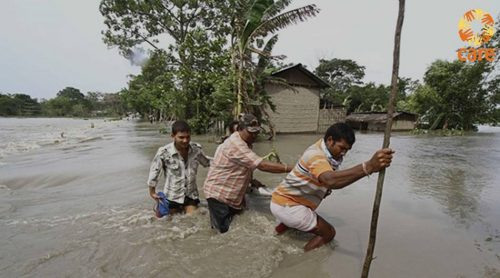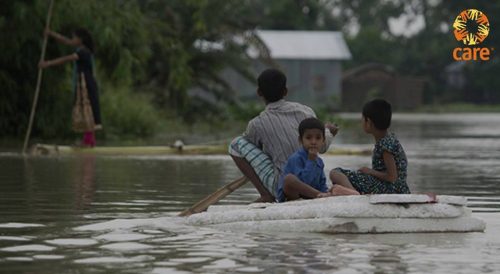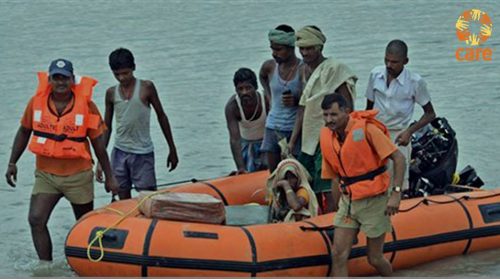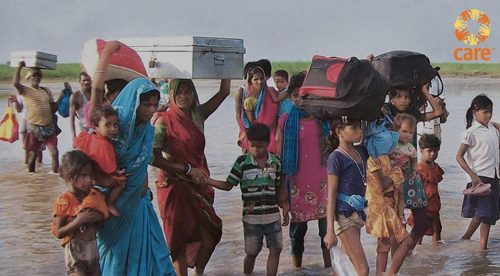TBI Blogs: 8 Easy Hacks That Might Save Your Life During a Flood
From emergency contact cards to hygiene kits, 8 simple hacks that will help you deal with floods.

From emergency contact cards to hygiene kits, 8 simple hacks that will help you deal with floods.
Global warming has led to India witnessing extreme weather patterns, from severe droughts to unprecedented flooding. Recent studies show that over one lakh people in the country are affected by floods, every year. This monsoon, floods claimed 850 lives across the country, including in Madhya Pradesh, Uttarakhand, Maharashtra, Uttar Pradesh and Gujarat.
Here’s a list of 8 ways in which you can better prepare yourself for such a disaster.
-
Prepare a basic ‘hygiene kit’

In the aftermath of a disaster and the struggle for survival, personal hygiene often takes the backseat. But by simply preparing a hygiene kit and keeping it handy, you can ensure that your hygiene needs are never compromised.
Ensure that your hygiene kit has a toothbrush, toothpaste, bathing soap, washing soap/powder, two pairs of clothes, 2 set of under garments, sanitary pads, a nail cutter, a comb, a towel, a shaving kit and a bucket with a lid.
2. Refrain from rumour mongering
Rumours create a lot of panic as people start fleeing in huge numbers from the flood-affected areas, many a times without securing the house properly. This also provides opportunities to thieves to steal from houses of the flood affected population.
3. Choose an emergency contact who does not live in your area

Given the breakdown of communication infrastructure in the aftermath of a disaster, it is often easier to connect with people outside the disaster affected area. Therefore, its wise to choose an emergency contact person who lives away from your area, since long-distance calls might be easier to make than local calls.
4. Create Contact Cards
Prepare an emergency contact card and make copies for each member of your family to carry with them. Be sure to include an out-of-town contact on your contact card as this will help each family member to get information on whether the other members have called in. This will also help reduce anxiety.
5. Add an ICE number in your phone

Adding an ICE (“In Case of Emergency”) contact to your phone can help emergency personnel locate a friend or family member who can speak on your behalf if you become unconscious or incapacitated. This is particularly useful for persons with pre-existing medical conditions or allergies. Besides adding it to mobile contacts, one can also put an ICE Sticker with contact details of emergency contact, on the back of one’s mobile phone.
6. Layer yourself to stay warm
During a cold wave, wear several layers of lightweight and warm clothes, rather than one layer of heavy clothing. The outer garments should be tightly woven and water-repellent.
7. Avoid washing dishes during thunderstorms
During thunderstorms, lightening can enter a structure through electric and telephone cables as well as plumbing systems. We should avoid washing dishes, taking a shower or doing laundry when there is lightening outside.
8. Ensure that boats are not overfilled

Capsizing of boats leads to a large number of deaths during floods. All boats are required to have a red line marked on the sides to depict maximum loading capacity. The moment the red line touches the water surface, the maximum loading capacity is reached and no further persons/load should be added to the boat.
To know more about us, visit www.careindia.org or connect with us on Facebook.
Like this story? Or have something to share? Write to us: [email protected], or connect with us on Facebook and Twitter.
NEW: Click here to get positive news on Whatsapp!
If you found our stories insightful, informative, or even just enjoyable, we invite you to consider making a voluntary payment to support the work we do at The Better India. Your contribution helps us continue producing quality content that educates, inspires, and drives positive change.
Choose one of the payment options below for your contribution-
By paying for the stories you value, you directly contribute to sustaining our efforts focused on making a difference in the world. Together, let’s ensure that impactful stories continue to be told and shared, enriching lives and communities alike.
Thank you for your support. Here are some frequently asked questions you might find helpful to know why you are contributing?


This story made me
-
97
-
121
-
89
-
167











